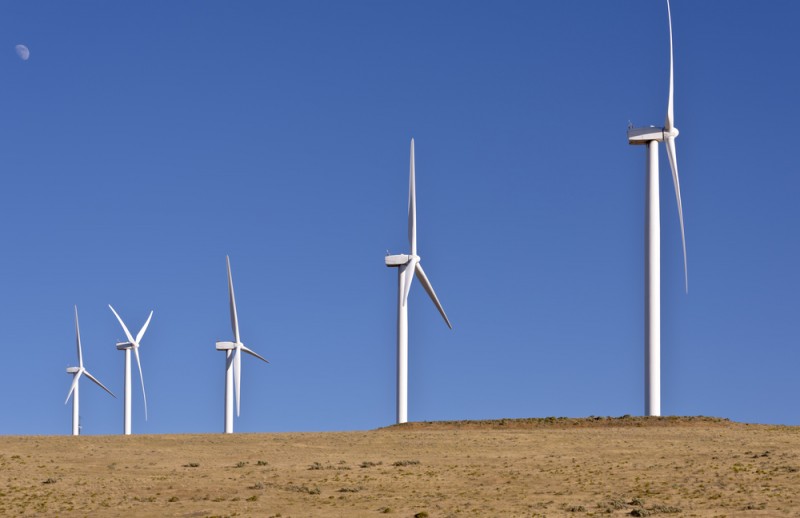Report finds new transmission could significantly boost wind energy

The U.S. Department of Energy released a study this week that showed that adding even limited electricity transmission could significantly reduce the costs of wind energy production.
The report, Reducing Wind Curtailment through Transmission Expansion in a Wind Vision Future, showed that adding transmission could help wind energy supply 20 percent of the United State’s energy in 2030 and 35 percent in 2050.
For the study, the National Renewable Energy Laboratory (NREL), the organization that authored the report, simulated the operation of a grid using the modeling tool PLEXOS. NREL modeled the function of the Western Interconnection grid, which includes 11 states, two Canadian provinces, and parts of northern Mexico, in a future where wind meets 35 percent of energy needs.
The study included a baseline of no transmission expansion, as well as three models with degrees of transmission expansion.
In the baseline scenario, NREL found that curtailment, situations in which wind farms are told not to generate power due to low grid capacity, could lead to higher costs and 15.5 percent of energy going unused.
If four proposed transmission projects are completed, the study found that curtailment could be cut in half. Further added transmission led to even less curtailment and eventually full use of wind energy.
Overall, the results of the study found that utility grids can reliably operate with more than 35 percent wind energy and 12 percent solar energy, and that even limited transmission expansion can significantly pave the way to a renewable energy future.
